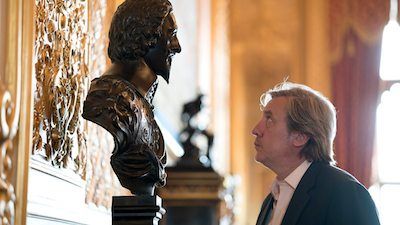Art, Passion & Power: The Story of the Royal Collection
Art, Passion & Power: The Story of the Royal Collection
Dangerous Magic (1x1)
: 17, 2018
In a major four-part series, Andrew Graham-Dixon explores the history of the Royal Collection, the dazzling collection of art and decorative objects owned by the Queen. Containing over a million items, this is one of the largest art collections in the world - its masterpieces by Van Dyck, Holbein, Leonardo da Vinci, Vermeer and Canaletto line the walls of Windsor Castle, Hampton Court and many other palaces, museums and institutions around Britain.
Andrew argues that on the surface, the Royal Collection projects permanence, but within these objects are stories of calamity, artistic passions and reinvention. Their collecting shows how these kings and queens wielded power, but it also reveals their personalities - it's through their individual passions that we see them at their most human.
In this first episode, Andrew marvels at the works acquired by the great founders of the modern Royal Collection - Henry VIII and Charles I. Henry VIII deployed the most essential rule of royal collecting, that great art projects great power. Andrew decodes The Story of Abraham series of tapestries in Hampton Court Palace's Great Hall, explaining how these luxury artworks contain a simple message for his terrified court - obedience.
But Henry also presided over the first great age of the portrait in England; his painter, Hans Holbein the Younger, was a magician who stopped time, preserving the faces of Henry's court forever. Andrew visits the Royal Collection's set of over 80 Holbein drawings in Windsor Castle's print room to see how the artist helped the English to understand themselves in a new way.
Henry VIII tried to overwhelm with magnificence, but for Charles I art was a way to compete with other kings through taste. He was our first connoisseur-king and the greatest royal collector in British history. It was a fateful journey to Spain to win the hand of a Spanish princess that opened Charles's eyes to the works of Titian and Raphael. But his transformation into a
